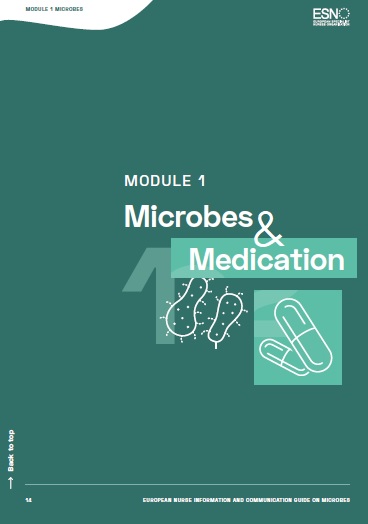Background
In 2020 the ESNO created the Nurses information and communication Guide on microbes touching the overall aspect on microbes. This initiative was taken by the ESNO and to the background of a far too less awareness and knowledge related to vaccination, Antimicrobial resistance and infection prevention. These topics cannot be address with a good start on providing information on microbes and the dynamics with medication. This project was successful concluded in May 2020 with an online launch, as an alternative of the presentation on location.
A year later, health professionals and especially nurses are so much aware of the importance on knowledge, competence and attitude on microbes to understand the microbes from inside, their impact and how to act professional related to prevention to meet the soon upcoming innovations and professional expectations.
The natural step forward is to review the first guide and include those elements overlooked in the first version. Overtime it will be needed next versions will occur but in this year we need to update the first version and lay fundaments for a structure for updates.
Mission and Vision
To provide adequate and relevant knowledge on microbes such as bacteria, viruses, fungi and others that: Nurses can communicate professional to colleagues nurses and patients, can act professional and adequate in the clinic, to work with professional standards in interdisciplinary context and being ready and able to adapt to future developments.
Goals
The goal is update the Nurses information and communication and therefore also a uniform guiding document for nurses in Europe to learn about the full spectrum of microbes and medication. With this guide nurses, this can be a base for knowledge, underrating and triggering beside a higher competence level also interest in the subject throughout live time career span.
About this Module 1
Part I Microbes: After reading you will understand the basics of microorganisms. This will include
the wide variety of bacteria, viruses, fungi, yeasts and parasites, and their characteristics such as growth, and replication. You will also know more about the diseases caused by
microorganisms and their diagnosis, and will be able to communicate these to colleagues and patients.
Part II, Medication: After reading you will understand the essentials of how vaccines, antibiotics and other antimicrobials work. You will know more about how vaccines are used to prevent infectious disease caused by bacteria and viruses, and that there are vaccines in development against fungi and parasites. You will be able to educate patients
about antibiotics, including that they are not effective against viruses. You will be better at
communicating and discussing the responsibilities of nurses, nurse specialists and physicians.


Activities
- Contacting the ESNO focus team on Microbes guide and setting up meeting.
- Create a form for new input on the new Module 1
- Suggested topics;
- Child immunisation schedules
- Specific with threats
- Zoonoses
- PRIME system on EMA
- …..
- …
- Child immunisation schedules
- Create a full overview of all topics to include
- Revise the content with the original
- Agreement: with members consortium
- Planning activities
- Short term:
- provide Nurses Guide as a starting fundament with basic activities (e.g. webinar)
- Windowing the activities in social media and ESNO campaign.
- Long term:
- Create digital transition
- Short term:
LINK TO RELEVANT ORGANISATIONS
ECDC …
WHO …
…..
Link to project plan
LINK TO RELEVANT PUBLICATIONS
Zoonose and need to understand (Luigi Apuzzo) 20-01-2020
LIST OF CONTRIBUTORS
Judith Perez
Luigi Apuzzo
Ber Oomen
….
….
